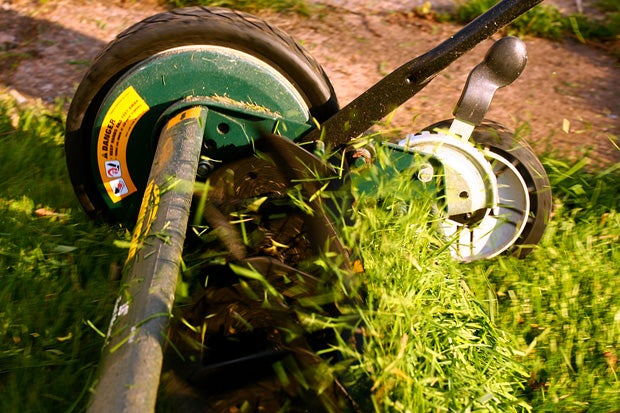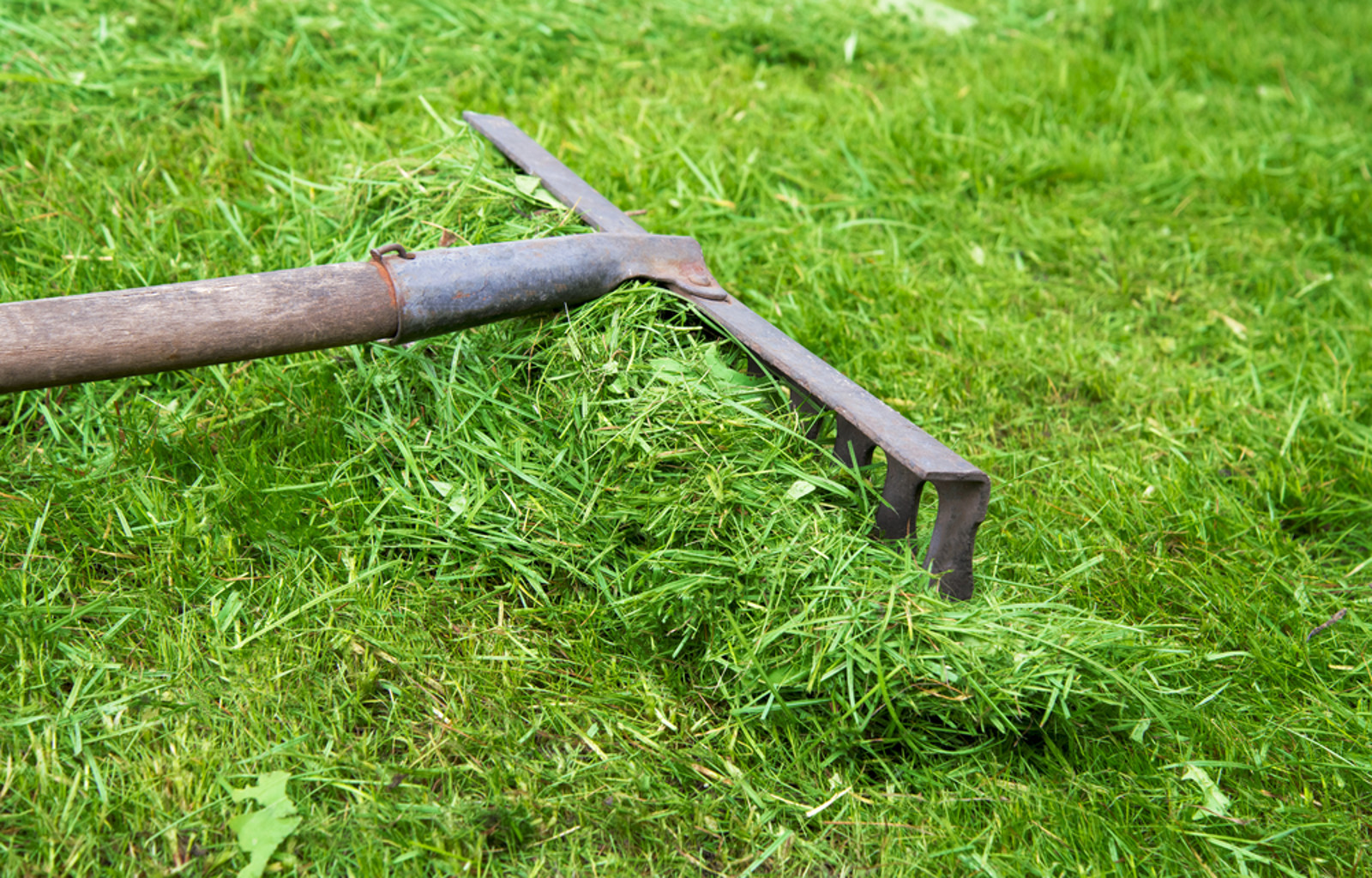Featured
Table of Contents
Discover More About Trees
People concerned about look can choose for a mulching mower, he suggested, as those cut turf finely. Still, lawn cut with a rotary lawn mower won't stay for long."Yard clippings are made from extremely soft tissue that breaks down rapidly," Mann said. While letting grass clippings lie is best, there are two factors you might wish to recover them.
Second, never let lawn clippings blow into roads or pathways, because healthy or not the turf blades high in nutrients can cause issues for sewage systems and waterways. Here are a couple of other pointers for trimming your lawn the very best method: "The sharpness of the blade is vital," Mann said. People cutting with a dull blade are shredding their lawn rather of correctly sufficing, which leaves space for fungi to attack.
Sometimes, it can cause turf to die. Changing the mower blade or honing it once a year can avoid that. The majority of turf ranges across the country thrive at 2.5 to 3 inches, but some, such as those in Florida, might like to be cut shorter or taller, Mann said. If you're uncertain of how long to leave your lawn, consult a landscape professional about what varieties of yard are growing in your lawn.
This information was put together by Anoka County. For extra recyclers in your location, search online. Any recycler wanting to be contributed to this list may call recycle@co.anoka.mn.us!.?.!. The info provided in this directory site is assembled as a service to citizens. A listing in this directory site does not indicate endorsement or approval by Anoka County.
My child has actually been attempting to construct out of 3 big stacks of lawn included by plastic fencing. With all the rain we've had, the piles have become wet, compacted, thick and extremely heavy. What can be done to make these stacks more reliable at breaking down? They have been turned, however we just recently included a great deal of grassand that plus the rain has made things a compressed mess.
That should be truly excellent for the garden ... no?-- Elizabeth in North Plainfield, New Jersey "No" is proper, Elizabeth. 'Green manure' is a crop that you grow to rake into the ground as living fertilizer. What your kid has is just a huge green smelly mess. (In fact, 3 big green stinky messes.) This is a common error for novice composters, specifically in the summer, when grass clippings are abundant.
Those clippings are REALLY high in Nitrogenabout 10%. That's practically the very same level you 'd find in actually HOT manures, like bat and bird guano. In the most basic sense, these Nitrogen rich parts do not become the garden compost in a stack; instead they provide food for the billions of little microorganisms that fuel the process of turning the other stuffthe so-called 'dry browns' that need to make up at least 80% of a pileinto the garden gold our plants so crave.
Read More About Shop
The benefit of including things like lettuce leaves, apple cores and broccoli stalks to a compost pile or is mainly in the relaxing of your recycling conscience, not in their capability to produce high quality compost. Now you can use clippings to make terrific compost, however to do so you need to mix percentages of well-shredded turf clippings in with large amounts of well-shredded leaves.
(The very best compost stacks follow the Goldilocks guideline: Not too damp and not too dry. Lots of air flow too. I know, Goldilocks didn't mention air flow. But she should have.) Anyway, the outcome of such an honorable business is the evasive, much desired garden modification referred to as "hot compost". Compost that cooks up rapidly with the aid of a natural source of high Nitrogen is much better food for your plants and offers much more life for your soil.
And it's the very best kind for making compost tea. "Cold garden compost"the things that results when you just stack a lot of things up, expect the very best and in fact get some finished product after a year or socan be a good plant food and soil improver, however hot compost is BETTER.

I fear that your huge piles of slimy damp yard clippings will not improve one bit with the passage of time. Just the opposite in fact. Ah, however your timing is good to get it right, as we are quick approaching fall leaf fall. Let lots of leaves gather on the yard throughout a dry spell (don't let damp leaves collect), discuss them with a mower, bag up what must be a perfect mix of great deals of wonderfully shredded leaves and a little quantity of well-shredded turf and after that empty this mixture into a huge wire cage, a slatted wood bin, a or something else to hold everything in location great and cool.
(Individuals who inform you to 'layer' the ingredients in a compost heap stopped working physics.) Yes, this will only utilize a little portion of the clippings produced by the typical lawn, and that's an excellent thing. Due to the fact that exterior of that autumn leaf drop window, you should NOT be bagging your grass clippings.
I utilize "quotes" since there's no 'mulch' of any kind included here. A bad name for an outstanding instrument of sustainability, mulching lawn mowers crush clippings into a practically invisible powder that they then return to your lawn. A powder that's 10% Nitrogen; about as high a natural number as you can get.
DON'T utilize any clippings from an herbicide-treated lawn in a compost heap. Some of the powerful chemicals in use today can endure even hot composting and might eliminate any plants that get the garden compost later. Oh, and stop using that toxic things too!!!.
Discover More About Sage
The Department of Public Works provides core civil services for the security and convenience of the people of Dayton. These important services-- consisting of Civil Engineering, Fleet Management, Parks and Forestry, Street Maintenance, and Waste Collection-- all boost Dayton's lifestyle. Click one of the links to the delegated explore featured services provided by Public Works.

What can I state? Grass clippings are important to composting. But you require to discover how to do it appropriately so both your yard and compost bin enjoy! A lot of property owners rapidly understand that their compost bin or system can not deal with all that yard! The following info will help you to much better understand how to recycle those yard clippings.
So, let's start there. Forget those long-held beliefs that turf clippings left on a yard smother the lawn below or cause thatch. Grass clippings are actually excellent for the lawn. From now on, do not bag your lawn clippings: "lawn cycle" them. Grasscycling is a basic, easy opportunity for every single homeowner to do something great for the environment.
And the finest part is, it takes less energy and time than bagging and dragging that turf to the curb. Like the fellow in the image to the left, you may even take your lawn clippings out for a Sunday bike ride; now that's grasscycling required to the severe! Grasscycling, in brief, is the practice of leaving grass clippings on the lawn or utilizing them as mulch.
Yard clippings add water-saving mulch and motivate natural soil aeration by earthworms. No bagging or raking the lawn (Whew!) Plastic yard bags do not end up in the landfill 50% of your yard's fertilizer requirements are fulfilled, so you reduce money and time spent fertilizing Less polluting: lowers the need for fertilizer, pesticides and herbicides Non-thatch triggering, therefore making a lawn vigorous and durable Makes you feel great and green all over! Yahoozy! Not only does it make caring for your lawn easier, however grasscycling can likewise decrease your mowing time by 50% due to the fact that you don't need to get afterwards.
To grasscycle correctly, cut the lawn when it's dry and always keep your lawn mower blades sharp. Get rid of no greater than 1/3 of the leaf area with each mowing. Cut when the lawn is dry. Utilize a sharp mower blade. A dull mower blade bruises and tears the grass plant, leading to a ragged, tarnished appearance at the leaf suggestion.
In the spring, lease an aerator which gets rid of cores of soil from the yard. This opens the soil and permits greater movement of water, fertilizer, and air by increasing the speed of decay of the yard clippings and improving deep root development. Water completely when required. During the driest duration of summertime, lawns need at least one inch of water every five to six days.
Read More About Gardener
Turf clippings, being mostly water and really abundant in nitrogen, are bothersome in garden compost bins since they tend to compact, increasing the opportunity of ending up being soggy and producing a strong ammonia-like smell. Follow these tips for composting this important "green", thus decreasing smell and matting, and increasing quick decay:, intermixed in a 2-to-1 ratio with "brown" materials such as dry leaves or plant particles (saving/bagging Fall's leaves is ideal for Spring/Summer lawn composting). That's an average of seven hours per season. Heck, that's a day at the beach!. No unique mower is required. For finest outcomes, keep the lawn mower blade sharp and mow just when the grass is dry. When clippings break down, they launch their nutrients back to the yard. They contain nitrogen, potassium and phosphorus, as well as lower amounts of other essential plant nutrients.
There's no contaminating run-off, no use of non-renewable resources and no damage to soil organisms or wildlife. The cost of trucking lawn clippings to land fill websites comes out of homeowners' taxes. This is an inefficient practice: all those nutrient-rich clippings might be fertilizing individuals's yards, thus conserving money on fertilizers and water costs.
Grasscycling is an accountable environmental practice and a chance for all property owners to minimize their waste. And the very best part is, it takes less energy and time than bagging and dragging that grass to the curb. Today, 58 million Americans spend approximately $30 billion every year to maintain over 23 million acres of yard.
The same size plot of land might still have a little yard for recreation, plus produce all of the veggies required to feed a family of six. The yards in the United States take in around 270 billion gallons of water a week: enough to water 81 million acres of organic vegetables, all summer long.
farmland, or approximately the size of the state of Indiana. Yards use 10 times as lots of chemicals per acre as commercial farmland. These pesticides, fertilizers, and herbicides run off into our groundwater and vaporize into our air, triggering widespread pollution and international warming, and significantly increasing our threat of cancer, heart disease, and abnormality.
In truth, yards use more equipment, labor, fuel, and agricultural contaminants than industrial farming, making yards the largest agricultural sector in the United States. But it's not just the residential yards that are squandered on turf. There are around 700,000 athletic premises and 14,500 golf courses in the United States, a lot of which utilized to be fertile, efficient farmland that was lost to designers when the local markets bottomed out.
To trim properly, a number of issues should be thought about: height, frequency, clipping elimination, and blade sharpness. The chart listed below identifies the most typical ranges of turfgrass grown in backyards, and the height to set your lawn mower. Check out the tips listed below for further directions. Kentucky Bluegrass 2.5-3.5" 4" Fine/Tall Fescue 2.5-3.5" 4" Seasonal Ryegrass 2.5-3" 4" Bermudagrass.5-1" 2" Zoysia.5-1" 2": Under many situations, lawns need to be trimmed at 2.5-3-inches.
Latest Posts
9045 Horticultural Tips
9064 Flower Garden Tips And Tricks
2561 Gardening Tips And Hints